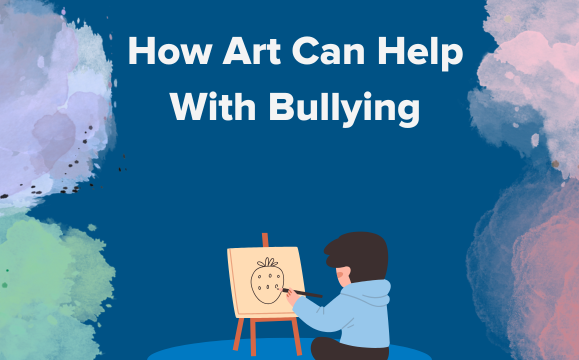How Art Can Help Children Cope with Bullying

Bullying has become a pervasive issue in school culture, impacting about 20% of high school students across the United States. The consequences can be severe and long-lasting, affecting a child’s mental health and overall well-being even after the bullying stops.
Thankfully, many who have experienced bullying have discovered that art can be a powerful tool for managing and expressing the negative emotions stemming from their past experiences.
Consider Kenny, a 7th grader from a K12-powered online school who found solace in painting. This student, who had previously been bullied for their size, submitted a piece titled “Never too Small” to their school’s national art contest. The artwork depicts an ant pulling a dragon away from a dry, desolate land to a green, lush meadow. According to Kenny, the dragon represents anger, fear, and the feeling of being bullied, while the ant represents the act of guiding the dragon to see the positive aspects of life. Kenny shared the meaning behind the painting, stating, “No matter how small others make you feel, you always have the choice to make a change and see things differently.”
As parents and educators, we can empower our children to handle negative emotions and traumatic experiences in healthy and creative ways, just like Kenny has. When children learn to manage their emotions effectively, they are more likely to have higher self-esteem and healthier relationships and often demonstrate better focus, problem-solving skills, impulse control, and resilience.
To support them, we need to provide tools and resources that enable individual expression and healing—and art has proven to be a powerful method. Art, in its many different forms, encourages self-esteem and self-expression. Children who engage in artistic pursuits can express their thoughts and visions without worrying about whether they’re right or wrong—because there is no correct way when it comes to creativity. The process of creating art can help relieve anxiety and promote natural relaxation. Studies indicate that engaging in even brief periods of art can significantly reduce anxiety and improve both physical and mental health. Research has also shown that creative endeavors such as music can positively impact at-risk children by reducing depression, emotional alienation, truancy, and aggression while increasing school attendance, self-esteem, personal empowerment, and empathy. Group
crafts and art projects have also been effective in promoting prosocial classroom behaviors and reducing bullying.
Importantly, art offers an accessible outlet for strong emotions and pain, enhancing overall well-being. For example, tenth grader Danette began experimenting with watercolor painting when she experienced bullying and feelings of loneliness at school years ago. Danette, who submitted her artwork to the K12 national art competition, shared that art offers her a safe space for expression and a sense of freedom.
While art alone cannot resolve the widespread issue of bullying, it offers a starting point. Just as the ant in Kenny’s painting demonstrates that no one is too small to help others see the good in life, art can be a small but powerful step towards healing.



